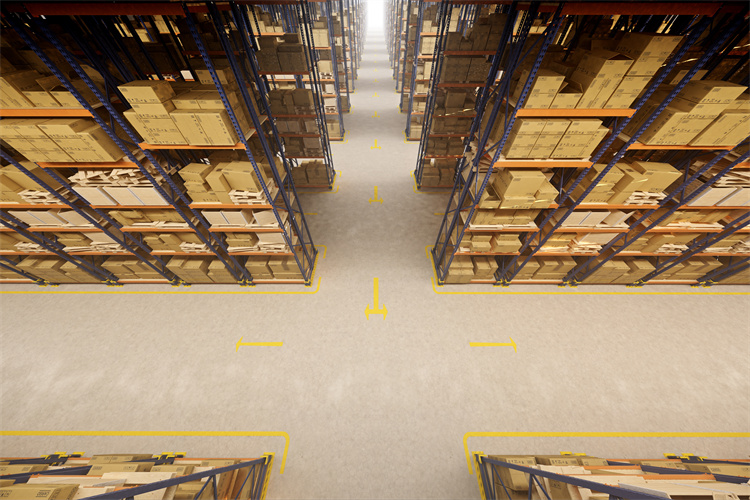The Evolution of Green and Circular Supply Chains in 2025

Sustainable supply chains have become essential in 2025. Businesses now prioritize sustainability to reduce costs and emissions. Circular practices cut material expenses by 30% and emissions by 50%. The circular economy eliminates waste and maximizes resources. Over 60% of large companies use real-time carbon tracking to meet net-zero goals, reshaping global business trends.
Key Takeaways
Using green and circular supply chains saves money and cuts waste. It can lower material costs by 30% and emissions by 50%. This helps the planet and your business profits.
Working with eco-friendly suppliers makes your business more sustainable. It also boosts your brand image and reduces costs by 5-10%.
Tools like JUSDA ESG give instant data and tips. These help improve supply chain steps and reach eco-friendly goals.
Defining Green and Circular Supply Chains
What are green supply chains?
Green supply chains focus on reducing the environmental impact of manufacturing and logistics. They integrate eco-friendly practices across all stages, from sourcing raw materials to managing waste. This approach emphasizes sustainable development by balancing industrial growth with ecological preservation. You can think of it as a way to optimize resource use while minimizing pollution.
Key principles of green supply chains include:
Incorporating eco-friendly practices into every step of the supply chain.
Managing resources efficiently to reduce waste and emissions.
Ensuring that business operations align with environmental goals.
By adopting green supply chains, businesses not only protect the environment but also improve their performance and reputation.
What are circular supply chains?
Circular supply chains operate within the framework of the circular economy. They aim to eliminate waste by reusing, recycling, and repurposing materials. Unlike traditional supply chains, which often follow a linear "take-make-dispose" model, circular supply chains focus on restorative and regenerative cycles.
Here are some key characteristics of circular supply chains:
Characteristic | Description |
|---|---|
R-imperatives | Principles guiding the circular supply chain. |
Restorative and regenerative cycles | Processes that restore and regenerate resources. |
Sustainability framework | A structure that supports sustainable practices. |
Value focus | Emphasis on creating value through resource efficiency. |
Holistic system-thinking | An approach that considers the entire system rather than isolated parts. |
Paradigm shift | A fundamental change in how supply chains are viewed and managed. |
Circular supply chains benefit businesses by reducing costs for raw materials and conserving resources. They also contribute to environmental goals by minimizing landfill use and preserving natural habitats.
Key differences between green and circular supply chains.
Green and circular supply chains share a commitment to sustainability but differ in their goals and processes. Green supply chains aim to reduce environmental impact, while circular supply chains strive to eliminate waste entirely.
Aspect | Green Supply Chain | Circular Supply Chain |
|---|---|---|
Primary Goal | Reduce environmental impact | Eliminate waste entirely |
Key Practices | Emissions reduction, sustainable sourcing | Reusing, recycling, repurposing materials |
System Type | Open-loop systems | Closed-loop systems |
Green supply chains focus on improving existing processes to make them more sustainable. Circular supply chains, on the other hand, require a shift in mindset to design systems that prioritize circularity from the start. Both approaches are essential for achieving a sustainable future.
Benefits of Green and Circular Supply Chains

Reducing environmental impact.
Green and circular supply chains significantly lower the environmental impact of business operations. By adopting circularity, you can reduce material costs by up to 30% and emissions by 50%. Collaborating with partners on sustainability improves your chances of achieving carbon-neutral goals by 20%. Using digital twins in supply chains helps you cut waste by up to 40% through better scenario planning. Structured employee sustainability programs also increase success rates in meeting environmental goals by 25%. These practices ensure that your business contributes to a healthier planet while staying competitive.
The circular economy model plays a vital role in reducing waste. Strategies like product life cycle assessments and sustainable sourcing help you minimize your environmental footprint. By integrating these approaches, you align your operations with global sustainability goals.
Achieving cost savings and resource efficiency.
Green and circular supply chains offer substantial cost savings and resource efficiency. Companies like IKEA have shown how focusing on resource efficiency and product lifecycle management can reduce their carbon footprint by 15% while saving millions in raw material costs annually. Waste reduction and recycling lower your expenses, while insights into supply chains drive innovation and efficiency. Compliance with environmental regulations also helps you avoid costly penalties. These benefits make sustainable practices a smart financial decision for your business.
Building brand loyalty and reputation.
Sustainable supply chains enhance your brand’s reputation and foster customer loyalty. Patagonia’s transparency through its 'Footprint Chronicles' allows customers to trace the environmental impact of its products, building trust and loyalty. Tesco’s commitment to reducing food waste and plastic use has strengthened its brand image. Similarly, collaborating with eco-conscious suppliers resonates with customers, increasing their preference for your brand. By prioritizing sustainability, you create a positive image that attracts and retains loyal customers.
Ensuring regulatory compliance and mitigating risks.
Governments worldwide are introducing stricter regulations to promote sustainability. The European Union’s Green Deal, for instance, mandates higher recycling rates and stricter emissions standards. Adopting green and circular supply chains ensures your compliance with these regulations. This proactive approach helps you mitigate risks associated with non-compliance, such as fines or reputational damage. By aligning with these frameworks, you future-proof your business and demonstrate your commitment to responsible practices.
Strategies for Implementing Green and Circular Supply Chains
Conducting supply chain audits for sustainability.
You can start by conducting supply chain audits to identify areas for improvement. Establish clear objectives and scope for the audit to ensure a focused approach. Use technology and data analytics to analyze supply chain data and uncover potential risks. Prioritize risk-based auditing to allocate resources effectively to the most vulnerable areas. Regularly monitor and review the audit process to adapt to emerging risks and refine your strategies. These steps help you align your operations with sustainable practices and improve overall efficiency.
Collaborating with eco-conscious suppliers.
Partnering with eco-conscious suppliers strengthens your commitment to sustainability. Suppliers who adopt energy-efficient processes and optimize resource use can help you lower operational costs. Collaborative relationships also enhance supply chain efficiency by up to 20% and reduce costs by 5-10%, according to McKinsey & Company. Working with such suppliers improves your brand reputation and builds trust with environmentally conscious consumers. This collaboration not only supports circularity but also makes your supply chains more resilient to disruptions.
Designing products for reuse and recycling.
Designing products for reuse and recycling ensures that your business contributes to circularity. Focus on creating durable products that last beyond their break-even point. Use materials free from harmful chemicals to prioritize health and safety. Develop regional supply chains to reduce environmental impact and boost local economies. Make reuse systems convenient to encourage consumer participation. By integrating these principles, you can align your product design with sustainable practices and meet evolving consumer expectations.
Leveraging technology like JUSDA ESG for optimization.
Technology plays a crucial role in optimizing green and circular supply chains. Platforms like JUSDA ESG provide end-to-end solutions that integrate manufacturing and distribution processes. Real-time data analytics and IoT applications enhance supply chain visibility, enabling you to make informed decisions. JUSDA ESG also supports sustainability by reducing carbon emissions and improving resource efficiency. Leveraging such technology ensures that your operations remain competitive while adhering to sustainable practices.
Fostering a culture of sustainability among stakeholders.
Building a culture of sustainability requires active engagement with stakeholders. Organize workshops to educate your team about sustainability and its alignment with company values. Assign clear roles and responsibilities to individuals managing sustainability initiatives. Incorporate these initiatives into existing processes to ensure seamless integration. Establish regular communication channels to share insights and address challenges. Recognize and celebrate the efforts of those driving these initiatives. These actions create a shared commitment to sustainability across your organization.
The Role of JUSDA in Advancing Circular Supply Chains
How JUSDA supports green supply chain transformation.
JUSDA helps you transform your supply chains by integrating sustainability into every stage. Its advanced technology enables real-time tracking and data analysis, allowing you to identify inefficiencies and reduce waste. JUSDA’s global network of service points and warehouses ensures seamless operations while minimizing environmental impact. By offering multimodal transport options, JUSDA helps you lower emissions and optimize logistics. Its focus on collaboration with eco-conscious partners ensures that your supply chain aligns with green goals. These efforts make JUSDA a leader in driving sustainable practices.
The impact of JUSDA ESG on sustainable supply chain practices.
JUSDA ESG provides you with tools to enhance circularity in your operations. The platform integrates IoT and big data to improve visibility and decision-making. It supports end-to-end solutions, from raw material procurement to consumer delivery. By using JUSDA ESG, you can reduce carbon emissions and improve resource efficiency. The platform also helps you comply with environmental regulations, ensuring that your business remains competitive. Its ability to streamline processes and promote sustainability makes it an essential tool for modern supply chains.
Case studies showcasing JUSDA's success in circular supply chains.
JUSDA’s collaboration with Sharp highlights its success in circular supply chains. By implementing JUSDA’s Supply Chain Management Collaboration Platform, Sharp reduced logistics costs by 20% and improved order processing cycles. The platform’s features, such as demand forecasting and inventory management, helped Sharp achieve greater efficiency. Another example is JUSDA’s work with Chinese manufacturers, where its AI-driven solutions optimized global operations. These case studies demonstrate how JUSDA enables businesses to adopt circularity and achieve sustainable growth.
The Evolution of Green and Circular Supply Chains in 2025

Technological innovations driving sustainability.
Technology continues to revolutionize supply chains, making sustainability more achievable. AI-driven systems analyze real-time data to optimize logistics, reducing inefficiencies and emissions. Advanced data analytics enable you to make informed decisions about inventory and transportation, cutting costs and waste. Circular economy principles also encourage designing products for reuse, repair, and recycling. These innovations not only enhance circularity but also ensure your supply chain remains competitive in a rapidly evolving market.
Digital technologies like IoT provide transparency across supply chains. You can track materials and processes in real time, ensuring compliance with environmental goals. These tools also help you identify areas for improvement, making it easier to adopt sustainable practices. By leveraging these advancements, you can align your operations with global sustainability trends.
The rise of circular economy models in supply chains.
Circular economy models are reshaping supply chains worldwide. Businesses now prioritize durability in product design to reduce replacements. Many incorporate recyclable materials to simplify recycling at the end of a product's life cycle. Take-back programs allow you to recover materials for repurposing, minimizing waste. Collaborating with suppliers committed to sustainable practices further enhances circularity.
This shift from linear to circular supply chains emphasizes repairability and recyclability. Governments support these efforts by offering incentives for sustainable product design and recycling industries. By adopting these models, you can create resilient supply chains that benefit both the environment and your bottom line.
Overcoming challenges in scaling green practices.
Scaling green practices in supply chains presents challenges. You must first identify sustainability issues within your operations. Proper supplier evaluation ensures alignment with your goals. Regular compliance checks help maintain standards, while traceability allows you to manage recalls effectively.
Upfront costs often deter businesses from adopting green practices. Hiring specialists, creating checkpoints, and tracking new metrics require investment. However, these costs are outweighed by the long-term benefits of compliance and efficiency. Collaborating with suppliers can also reduce the financial burden, making green practices more accessible.
Future trends and opportunities in sustainable supply chains.
Sustainable supply chains offer exciting opportunities. Ethical sourcing ensures materials are responsibly obtained, protecting workers' rights. Logistics modernizations, such as route optimization and alternative fuel vehicles, reduce greenhouse gas emissions. Circular economy practices like reuse and recycling conserve resources and minimize waste.
Advanced technologies like AI and IoT continue to transform supply chains. These tools enhance efficiency and sustainability, giving you a competitive edge. By embracing these trends, you can position your business as a leader in sustainability while meeting the demands of environmentally conscious consumers.

JUSDA Solutions
To provide you with professional solutions and quotations.
Green and circular supply chains are vital for sustainable business operations in 2025. They enhance resilience during disruptions, provide better control over resources, and help you achieve environmental goals while staying profitable. JUSDA empowers you with innovative tools like JUSDA ESG to streamline processes and embrace sustainability. Shifting your mindset to view circular practices as strategic investments ensures long-term success.
See Also
Top 5 Trends Shaping Future Supply Chain Efficiency
Comprehensive Guide to Eco-Friendly Supply Chain Transportation
Exploring Career Advancement Through Future Supply Chains
